Results 3,591 to 3,600 of 12094
Thread: Anandtech News
-
01-16-14, 11:31 PM #3591
Anandtech: Intel System Giveaway Part 2: High Performance Core i5
Late last year Intel came to us with an interesting proposition: using Haswell CPUs and Intel SSDs, we had to come up with four of our best system builds. Each build would be targeted at a slightly different type of user and budget, but all are aimed at folks looking to overclock. With the component list assembled, Intel went out, got all of the parts we selected and agreed to give away the bundles to AnandTech readers.
With the hectic holidays and CES our giveaway schedule was interrupted but we're back and have 3 more builds to give away. These systems are purely parts bundles, you'll have to assemble them yourself. Literally everything here was picked by Jarred and Ian as what they'd build if given these budgets.

More...
-
01-17-14, 09:00 AM #3592
Anandtech: Powerline Networking - End of the Road for G.hn?
I have been making it a point to catch up on the state of the powerline networking industry every CES, and this year was no different. In 2013, I had talked about how G.hn and HomePlug were heading for a showdown. A year later, it looks like G.hn's claims haven't materialised into anything concrete. Over the last year, G.hn decided to concentrate solely on the service provider market, and within that, mainly in the China region and other places where HomePlug hadn't taken root yet. The HomeGrid (G.hn) forum announced a number of partnerships, but I heard from industry sources that none of these announcements have resulted in any shipping products yet.
G.hn had two major trump cards over HomePlug when it was brought up as an alternative. The first one being the ability to obtain gigabit-level speeds, and the second one being the ability to operate over any wire (powerline, coax or phone line). With the launch of HPAV2, the first trump card has been lost. Will the second trump card be attractive enough for service providers to risk choosing it over what is proven technology? It looks unlikely based on what I heard and saw at CES. I have been checking out really awesome demonstrations of the capbilities of G.hn from Sigma Designs (back in 2011) and Marvell (in 2013), but I am left wondering what is preventing them from coming to the market. It would be great to hear more on this in the comments section from readers familiar with this space.
On the other hand, HomePlug is going from strength to strength. Over the last year, they have cornered the 'PLC for electric cars' market, developed a certification program (Netricity) for long-distance low-frequency narrow band PLC (up to 500 kbps below 500 kHz) and launched the nVoy certification program for IEEE P1905.1 hybrid networking products.
The HomeGrid forum had its fair size of news to share too, but the real success of a technology lies in shipping announced products to end users (be it service providers or retail consumers). As of now, I am not aware of any shipping G.hn product. All the networking vendors (catering to the service provider market) that I talked to at CES seem to be committed to HomePlug for the near future. None of them have any G.hn products in their pipeline currently. If this is the state even three years after silicon was first demonstrated, I am not sure how G.hn can make inroads any further (considering that one of their trump cards is no longer on the table).

More...
-
01-17-14, 10:02 AM #3593
Anandtech: Best Video Cards: January 2014
After our Holiday 2013 buyer’s guides, a number of you asked for more frequent buyers guides year-round. So starting this year we’re going to be attempting to publish guides on a more regular basis, particularly for more volatile and competitive components such as video cards.
To kick that off, let’s start with our first buyer’s guide of the year, our January 2014 desktop video card buyer’s guide. Since our last guide there have not been any major product launches, so the makeup of the market has not changed. However due to a few different factors – chiefly Cryptocoin Mania and what we suspect are some inventory drawdowns ahead of future product launches – pricing and availability for a number of video cards has shifted.
From an inventory perspective, there has been a clear drawdown of GeForce GTX 650 Ti Boost cards, which are now virtually impossible to find. GTX 650 Ti Boost is one of 3 GK106 based cards offered by NVIDIA and usually packed the most performance per dollar, making it one of our recommendations last month. At this point there’s reason to believe that NVIDIA is drawing down inventory ahead of a new product refresh, so that GTX 650 Ti Boost isn’t competing with its successor. Note that GK106 wasn’t put into a 700 series card in 2013, so with its 1 year anniversary coming up in 2 months, NVIDIA may finally be getting around to doing that.
Meanwhile in AMD’s camp things are in flux, both for all the benefits and drawbacks that brings. Last month AMD announced that they’ll be launching the Radeon R7 260 this month, but those cards have yet to hit the market. A lower tier Bonaire part, the R7 260 will fill the gap between the R7 260X, and the Oland based R7 250.
At the other end of the market, AMD is having unprecedented demand issues which has severely distorted pricing for the R9 280 and R9 290 series. In brief, Cryptocoin Mania has resulted in virtually every high-end AMD card being snatched up for mining. And with cryptocoin prices having risen to new levels in the last few months, the value of these cards as miners has exceeded their value as video cards, resulting in the demand spike. With video card prices now being almost unilaterally dictated by mining returns and electricity costs, the 280 series and 290 series are all running roughly $100 over MSRP.
Consequently AMD’s best cards are generally uncompetitive with NVIDIA’s cards for anything but mining. This goes especially for the R9 280X and R9 290, both of which are well off of their sweet spots. As a result NVIDIA has almost full control of the $300+ market as far as gaming is concerned. Though perhaps worse, because NVIDIA doesn’t have a card between $330 and $500, there’s a sizable gap in the market on a price basis and a performance basis that is going to leave some buyers in a lurch between picking a lower performance card or paying much more for a top tier card.
Truth be told we had figured this would blow over by now (if only due to increases in mining difficulty multipliers), but AMD card prices have held their inflated prices for almost two months now. Which on a side note is good for AMD – they’re clearly selling almost everything they can make – but it’s also not great because they’re not the one setting these new card prices, or the ones collecting the higher profit. The same goes for the partners, who are still selling the finished cards to retailers at normal prices. Instead the profit between MSRP and these inflated prices is being captured by retailers, which although is good for them (retail is a notoriously low margin business), it does mean that the always financially precarious AMD doesn’t get to further improve their balance sheets in the process.
Anyhow, market summaries behind us, let’s look at individual recommendations. We’ve laid out our ideas of price/performance bands and recommendations in our table below, with our full explanations and alternative options to follow.
In general, high quality 1080p gaming will start at $199; going above that will find cards that are good for 1440p, 4K, and multi-monitor, while going below that will find cards that will require some quality sacrifices to stay at 1080p.
Budget (<$99): AMD Radeon HD 7770Jaunary 2014 GPU Performance Guide Performance Band Price Range Recommendation 1080p (Low) $99-$139 AMD Radeon HD 7770 1080p (Med) $139-$2091080p (High) $209-$3291440p (Med) $329-$4991440p (High) $499-$6791440p (Max) $679+4K/Multi-Monitor (High) $1200+
Although it’s technically being discontinued, there are still enough AMD Radeon HD 7770 cards available on the market that the 7770 remains our recommendation for the sub-$100 market. For the budget market where every penny counts, this is unquestionably the budget sweet spot. At $99 the 7770 is going to outperform any other AMD or NVIDIA card at similar prices, making it the fastest thing at this price.
From a performance perspective the 7770 isn’t going to quite hit the sweet spot we outlined earlier, but for those gamers on a strict budget it will get the job done. In the long run it should be able to run most games even at 1080p with medium-to-low settings, along with keeping texture quality down a notch to account for its 1GB of VRAM. Battlefield, GRID 2, and even Total War: Rome 2 can easily hum along on this card at decent settings at 1080p.
Unfortunately, since last month it looks like AMD has discontinued providing vouchers for the 7770 to participate in their Never Settle Forever program. According to the latest terms and conditions it should qualify for the Bronze tier, but without vouchers that doesn’t mean much.
Mainstream Sweet Spot ($139): AMD Radeon R7 260X
With NVIDIA having drawn down the GeForce GTX 650 Ti Boost inventory, AMD essentially has a lock on this specific price point with the Radeon R7 260X, offering a relatively cheap card with legs to last. From a performance standpoint it’s not going to be able to play every game at 1080p at high settings, but it will be fast enough for medium-to-high depending on the game, which will be a notch or two higher than what the $99 cards can do. Meanwhile the 2GB of VRAM will mean that future games shouldn’t bog down the card quite as badly; higher graphical fidelity games will slow it down like any other card, but there’s enough VRAM to keep up with the demands of higher resolution textures and heavier use of intermediate buffers.
As an added kicker, the 260X is the lowest tier card to qualify for the Silver tier in AMD’s Never Settle Forever program. AMD’s silver tier is good for two games, one of which will be the forthcoming (and Mantle/TrueAudio enabled) Thief.
1080p Gaming ($209): AMD Radeon R9 270X
Moving up our product lists, at $199(ish) we’re finally up to cards that are fast enough to play most games at 1080p with high-to-ultra settings. More powerful/expensive cards will offer a further edge for the most demanding games, along with offering a bit more longevity, but for most games at the extremely common resolution of 1080p, it only takes $199 to hit a great level of graphical fidelity for that resolution.
To that end there is no better card at this price than AMD’s recently released Radeon R9 270X. Based on a fully enabled Pitcairn GPU, 270X easily offers the most bang for the buck, keeping its distance from NVIDIA’s GTX 600 series competition while getting rather close to NVIDIA’s more expensive GeForce GTX 760. The only catch right now is that 270X prices a running a hair over MSRP; while they’re supposed to start at $199, in practice they start at $209. For a $10 difference we’re not going to make much of a fuss, but it does mean that AMD technically misses the $199 mark by a Hamilton.
Meanwhile buyers looking for bundled games will come up disappointed. The only cards participating in AMD’s bungled Battlefield 4 promotion carry a price premium, assuming of course you can find one at all.
Runner Up: AMD Radeon R9 270: Briefly, AMD’s lower tier R9 270 card makes for a good runner up here. The performance is still strong, but more importantly 270 is AMD’s top 150W card, for those gamers looking for something that will work with a limited capability PSU. Asus’s 270 DCUII OC absolutely floored us here in recent testing, producing next to no noise.
Reaching For 1440p ($339): NVIDIA GeForce GTX 770
Our $300 spot was previously occupied by AMD’s Radeon R9 280X, but Cryptocoin Mania has driven up the price of those cards by nearly 33%. As we mentioned last time, if the 280X is not available then our recommendation falls to what was the runner up, NVIDIA’s GeForce GTX 770. To that end the GTX 770 isn’t quite a $300 card, but given the current market dynamics it’s as close as we’re going to get in a product that has a good balance between price and performance.
For the GTX 770 we’re looking at a card that will straddle 1080p and 1440p. It’s not quite fast enough to work in every game at 1440p with high quality settings, but it’s fast enough for many of them. Alternatively, it’s fast enough at 1080p that it has no problem at that resolution with everything cranked up, including high levels of MSAA and even SSAA in some games. The only area where it may come up short is VRAM, which at 2GB is enough for today, but it probably won’t have as much headroom for 1440p in the future. There are 4GB cards, but that will carry a $30+ premium.
Meanwhile for bundle bonuses, the GTX 770 (and all other 700 series cards) qualifies for NVIDIA’s new Winter 2014 game bundle. The Winter 2014 bundle includes a free copy of Assassin’s Creed IV: Black Flag - NVIDIA’s flagship game under The Way It’s Meant To Be Played program – and further offers a $50 bundle discount on NVIDIA’s SHIELD handheld gaming console.
Extreme Performance with Refinement ($499): NVIDIA GeForce GTX 780
As we briefly mentioned earlier in our market summary, the next step up in video cards after the GTX 770 doesn’t occur until $500 with the GTX 780. Unfortunately this leaves something of a large gap that the Radeon R9 290 used to close, but in the current market that’s no longer an option.
Positioned as NVIDIA’s lowest tier GK110 card, the high performance offered by the GeForce GTX 780 means it should be fast enough to run virtually anything at 1440p with high-to-extreme settings, and 1080p gamers should have no trouble hitting 120fps in anything that isn’t CPU limited to begin with. To that end the GTX 780 is the cheapest card that can drive all sub-4K single-monitor setups, giving it a sweet spot position of its own in the current market.
As an added bonus, even at the $499 base price this gets access to NVIDIA’s amazing metal cooler, which in our tests is enough to keep noise levels under 50dB. So for gamers looking for a balance between performance and noise, the GTX 780 is a star. Meanwhile for gamers looking at open air coolers, GTX 780 cards with alternative coolers such as EVGA’s ACX cooler will find that the GTX 780 can be even quieter for the usual tradeoff between a blower and an open air cooler.
Also, like the GTX 770, the GTX 780 qualifies for NVIDIA’s Winter 2014 game bundle, which means it includes Assassin’s Creed IV: Black Flag and a $50 SHIELD discount.
Finally, while the Radeon R9 290 doesn’t make the cut as a runner-up here, it does at least bear mentioning. The 290’s strong suit was as a spoiler at $400; at $500 it offers performance similar to the GTX 780, but it loses rather badly on noise/build-quality. It’s certainly an option, but for gaming we don’t see any reason to pick a reference 290 over a GTX 780.
Taking the Single-GPU Crown ($679): NVIDIA GeForce GTX 780 Ti
For our next selection past the GTX 780, we hummed and hawed a bit before deciding to pass up the Radeon R9 290X and settle on the GeForce GTX 780 Ti. Simply put, with 290X prices at $600 and above, there’s little reason not to pay another 10% or so and pick up the best single GPU card on the market. To that end, as NVIDIA’s top tier GK110 part the GeForce GTX 780 Ti stands alone at the top.
Note that like the other 700 series cards, the GTX 780 Ti qualifies for NVIDIA’s Winter 2014 game bundle, which means it includes Assassin’s Creed IV: Black Flag and a $50 SHIELD discount.
4K for Me ($1200+): 2x AMD Radeon R9 290X
Though the Radeon R9 290X doesn’t make a ton of sense on its own in light its higher price and odd spot between the GTX 780 cards, if we want to move into 4K gaming and the extreme load it presents, a pair of 290Xs becomes a very tantalizing option. Thanks to AMD’s new XDMA engine the 290X has no problem scaling up to 4K in Crossfire, taking AMD’s decent single-card 4K performance and scaling it up to something that allows for 4K without the quality compromises. Considering 60Hz 4K monitors still run for $1000+, it doesn’t make any sense not to pair such an expensive monitor with anything less than a pair of 290Xs.
Meanwhile the GTX 780 Ti in SLI is going to be a viable alternative here, but NVIDIA doesn’t offer much of an incentive. The total price tag is $160 more for roughly identical multi-GPU performance (and a bit less VRAM), with the only meaningful difference being a bit less noise and a bit less power consumption. This still puts the price of the video cards at roughly the price of the cheapest 4K monitor – so really it may as well be down to buyer preference – but there’s certainly no performance incentive to spend the additional money.

More...
-
01-17-14, 03:30 PM #3594
Anandtech: Toshiba’s 4K Laptops and Updated KIRAbook – CES 2014
The visit to Toshiba’s booth at CES was interesting for a number of reasons, and their upcoming lineup is a good indication of how polarized the PC and tablet industry has become in terms of price targets and the resulting quality. At the budget end of the spectrum, Toshiba has a new 13.3” Chromebook coming out, and makes a point of this being the first ever 13.3” Chromebook on the market. While technically true, I’m not sure it really matters that much when 11.6” and 14” Chromebooks are available, but if you wanted something in between you can now turn to Toshiba. Priced at $280, the Toshiba Chromebook comes with a Haswell Celeron 2955U processor – the same CPU as Acer’s 11.6” C720 Chromebook. It also comes with 2GB RAM and 16GB eMMC storage, weighs 3.3 pounds, measures 0.8” thick, and boasts battery life of up to 9 hours. The specs are all reasonable, but build quality definitely tends towards the flimsy plastic end of the spectrum, and when Acer’s C720 delivers otherwise similar specs outside of the LCD size for $200, spending $80 more for a larger chassis may be a tough sell. It’s not a bad product per se, but overall I prefer the feel of the Acer C720.
Shift to the other end of the laptop spectrum and Toshiba has a couple laptops sporting 4K displays. The two options are somewhat similar, with the Tecra W50 being for business users and the Satellite P50t going after the consumer market. Starting with the marquee feature, the display is a 15.6” 3840x2160 panel – 262 PPI. It’s difficult to say what the colors are like given the viewing environment, but at least subjectively it looked closer to producing correct colors than most laptops, and that’s a patterns we’ve noticed with many of the high-DPI panels. As far as aesthetics, the P50t is a consumer device that comes with a Blu-ray combo drive, glossy touchscreen display, and glossy keys. I really like the keyboard layout Toshiba uses (hello proper 10-key!), but I wouldn’t mind a switch to non-glossy keys. I suppose it’s not enough to be a deal breaker, but it definitely feels a bit out of date in terms of styling. The Tecra by comparison ditches the touchscreen and instead goes with a matte panel, and it also has workstation level features like the ability to support up to a Quadro K2100M GPU. It’s also quite a bit heavier at up to six pounds (depending on configuration). Both are slated for release in the middle of the year, so perhaps there’s still time for changes perhaps, but we’ll see what happens.
The last notebook to discuss from Toshiba is actually one of the nicest (perhaps even the best) looking Ultrabooks at the show, the KIRAbook. There was a lot to like about the original Ivy Bridge KIRAbook, but pricing was perhaps a bit too high, battery life was middling, and build quality (specifically, the flex on the display portion of the chassis) was far more than we like on a premium device. With the Haswell update, Toshiba looks to have fixed at least the battery life aspect, and perhaps pricing will be a bit more compelling this round. Toshiba claims up to 9 hours of battery life, which should be about right compared to the Ivy Bridge design with the same core specs. That includes a 2560x1440 (available with or without touch), a 0.7” thick profile, and a weight of just 2.6 pounds. The body is constructed of AZ91 magnesium alloy that’s supposed to be more rigid and durable than the A6063 aluminum alloy, though I couldn’t tell you who uses the latter. Pricing and availability are scheduled for February 2014 with the base model selling for $1500; it’s not clear if that includes a 256GB SSD and 8GB RAM, but that appears likely from the press release.
Gallery: Toshiba’s 4K Laptops and Updated KIRAbook – CES 2014_thumb.jpg)
_thumb.jpg)
_thumb.jpg)
_thumb.jpg)
_thumb.jpg)
_thumb.jpg)

More...
-
01-17-14, 04:30 PM #3595
Anandtech: Toshiba Excite and Encore Tablets, Click and Z10t Hybrids - CES 2014
The tablet and hybrid side of Toshiba was similarly diversified, with and ultra-budget device sitting right next to a very high-end tablet. Toshiba reps said they’re going after the $99 price point with an updated Excite 7 tablet, which seems to be the same core hardware as before but with a lower price. I wouldn’t be too sure about that price, however, as the reps also told me it was a Tegra 4 SoC and that’s clearly not the case – we’re looking at a dual-core 1.5GHz Cortex-A9 SoC with PowerVR SGX 540. Judging by some of the information I could get off the tablet, it may come with 6GB (8GB) of storage and 1GB RAM, with a 1024x552 display. While performance and overall quality may not match that of the latest and greatest tablets, if Toshiba really hits a $99 MSRP for the Excite 7 they could still move a lot of units.
Jumping way over to the high-end – and with nothing in between – is the Excite Write, a 10” tablet with a Tegra 4 SoC (probably the SoC the reps were talking about earlier), with a Wacom digitizer and stylus. The Write also has a 2560x1600 display, 2GB RAM, and a variable amount of storage depending on the model. Starting price? $600. So yeah, you could buy six Excite 7 tablets or one Excite Write, though obviously there’s more to it than that. Rounding things out on their tablets is the Encore 8.1, a Windows 8.1 tablet with an 8” display and Atom Z3740 SoC with a new target price of $299 (down from the original launch price of $329). If you’re after a Windows 8.1 tablet, the Encore 8.1 might fit your needs, and it includes Microsoft Office Home and Student to sweeten the deal.
None of the above devices are new, but it was our first chance to go hands-on so I thought I’d at least mention them. There were a couple more tablet-like device at Toshiba that have come out during the past few months, the Satellite Click and the Portege Z10t. Portege tends to be the business variant of Toshiba’s ultraportable line, but in this case there appears to be little overlap between the Satellite Click and Portege Z10t – I’m simply mentioning them together as they’re both hybrid detachable tablet-laptop devices.
The Click is a 13.3” hybrid that uses an AMD A4-1200 (Kabini) SoC/APU with a target price of $600. That will get you 4GB RAM, 500GB HDD (yeah, no SSD here), the keyboard dock, and a 2-cell battery in the tablet with another battery (2-cell?) in the keyboard dock. Battery charging and drain are prioritized do the dock is used first and the tablet is charged first, but holding a 13.3” 1366x768 tablet is still probably more conspicuous than most of us would like, and sadly the AMD Kabini APU doesn’t do a lot to make up for other deficiencies in the design.
As for the Portege Z10t, it’s a slightly smaller detachable with an 11.6” 1920x1080 display and with Intel’s Y-series CPU powering the device. Think of this as basically an Ultrabook with a detachable keyboard and you’re not too far off, though it can still be a bit bulky for a tablet. The Z10t originally launched with Ivy Bridge, but it is now being updated with a Haswell i5-4200Y processor and appears to come with 8GB RAM. That should help improve battery life over the earlier model, but the pricing for the currently shipping IVB models starts at $1449, so that’s still pretty steep. The Haswell update will likely come in around $1500 MSRP starting prices, but I didn’t get any specific information on pricing or availability.
Gallery: Toshiba Excite and Encore Tablets, Click and Z10t Hybrids – CES 2014_thumb.jpg)
_thumb.jpg)
_thumb.jpg)
_thumb.jpg)
_thumb.jpg)
_thumb.jpg)

More...
-
01-18-14, 04:30 AM #3596
Anandtech: CES 2014 Networking Wrap-Up: D-Link, Netgear, Thecus and ZyXEL
It has been a week since we got back from CES 2014. In this piece, we have some quick notes on all the miscellaneous products / announcements that we checked out at CES in the networking and networked storage categories. In the concluding section, we also have a few thoughts on where the various product categories are headed.
D-Link - FCC Leaks Point to Home Automation Play
D-Link's suite had on display all their products announced at CES. We weren't planned on writing up about the visit since we were placed under NDA for most of the interesting information / demonstrations. However, ZatzNotFunny unearthed a public FCC filing and a product link for the D-Link HomeSense Wi-Fi Smart Plug (a Belkin WeMo-like product that has an electrical relay controllable using an app over the Internet / Wi-Fi).
This, along with the other 'HomeSense' home automation products (again, referenced by ZatzNotFunny) were supposed to be under NDA until later this quarter, but it looks like public FCC filings have let the cat out of the bag.
Netgear - HDMI Stick & Cable Modem / 802.11ac Router Gateway
Netgear's suite had all their products announced at CES on display. There were a couple of interesting product lines that we didn't cover in our write-up based on the press release. One of them was the Android HDMI stick, NTV300D. Considering that these types of devices are a dime a dozen in the retail market, Netgear is doing the right thing by targeting it towards the service provider market.
In addition to the HDMI stick, the system also includes a home gateway with a hard disk where media can be stored (for DVR purposes). The HDMI stick can act as a receiver for wall mounted TVs, while a more traditional puck-like design (similar to the existing NeoTV OTT boxes), the NTV300M, can be used for the typical entertainment center with a stand or desk. The home gateway can be kept at a central location and doesn't need to be connected to a TV. Netgear also had some other service provider-only products on display including their home automation lineup as well as new 720p30 IP cameras.
Another interesting product was the C6300 DOCSIS 3.0 cable modem / AC1750 router gateway. Usually, such cable modem gateways are sold through service providers, but Netgear is preparing this for retail availability at a $230 price point. Given the separate costs of a DOCSIS 3.0 cable modem and a AC1750 router, this looks like a very sound product on the price front. I am interested in checking out our readers' views on a modem / router combo gateway vs. a traditional separate modem and router.
Thecus - First Trip to CES
Thecus attended CES for the first time in their history. They have had a regular presence at Computex and other trade shows around the world over the last several years. The focus seemed more towards having a display of the currently available products and distribution of product literature (perfectly fine for their intent, which was to attract more customers and let attendees know about the products being sold by Thecus). There were no live demos or new OS features (most of the other NAS vendors launch either a new OS version or present new hardware at CES).
Gallery: Thecus @ CES 2014
That said, Thecus did announce some 10 GbE-enabled NAS units including the N7710-G and N8810-G at price points of $1200 and $2000 respectively. These are based on the Intel Pentium G850 dual-core CPUs. This is a nice balance between the Celerons used in the QNAP TS-x70 series (which are also 10 GbE-capable) and the Core i / Xeon CPUs used in the higher-priced models.
ZyXEL - Targeting Service Providers
ZyXEL usually uses CES to announce a few new products and meet up with their current / prospective service provider customers. Like D-Link, most of the interesting information was under NDA, but we did grab some pictures of their product line on display.
Gallery: ZyXEL @ CES 2014
Some of the interesting products were a LTE broadband gateway, the PMG2542 GPON Fiber gateway (which also happened to be a CES Innovations 2014  Design and Engineering Honoree) and FTTH (fiber to the home) gateways. MoCA and HPNA devices, as well as HomePlug devices were on display. The PMG2542 is particularly exciting because it happens to use Quantenna's 4x4 802.11n implementation. Various powerline networking kits and 802.11ac routers / extenders were also on display under the ZyFi tag.
TP-LINK - HPAV2 Product Piques Curiosity
We met with almost all the vendors we had worked with before, but missed out on some of the new entrants to the US market. On the networking side, I did see TP-Link's huge presence on the show floor. However, with no prior meeting set up, it would have been impossible to go beyond what was announced in their CES press release. TP-LINK's foray into the US market has some of the other vendors worried, and it appears that TP-LINK is already the largest seller of WLAN products worldwide as per the latest IDC report. The most interesting product in the PR appears to be the AV1000 PLC kit based on HPAV2. TRENDnet and TP-LINK seem to be the only two vendors with publicly announced designs based on the QCA7500 powerline chipset. We hope to evaluate some of TP-LINK's products in the near future.
Concluding Remarks
CES 2014 was an exciting show for the networking market. The biggest announcement, in our opinion, was Quantenna's 4x4 802.11ac solution for Wi-Fi routers. Wave2 products have the ability to leave people impressed with real Gigabit Wi-Fi capabilities. It will be interesting to see Broadcom's and Qualcomm Atheros's response to this chipset. In the PLC front, the appearance of products with MIMO capabilities and compliant with the HPAV2 standard is also a heartening milestone for HomePlug technology.
On the NAS side, we would say it was a bit disappointing. Our hope was that we would see some product announcements based on the latest Intel Atom platforms (Bay Trail / Avoton / Rangeley). Unfortunately, nothing materialized. Privately, we were told by various NAS vendors that products were being worked on for a late Q2 / Q3 announcement. While Avoton should bring much-needed AES-NI acceleration for encrypted volumes / shares, companies will still be able to use some Rangeley-based platforms (without hardware accelerated cryptography functions) for products without export restrictions. The other worrying aspect for some of the NAS vendors is the absence of clarity on Intel's side with respect to the Evansport platform. Some of them are not very enthused by the repurposing of a set-top-box chipset for the NAS market. I would love to learn what is on Intel's roadmap for the low-end NAS market currently dominated by Marvell's ARM-based SoCs.
The home automation market is also well primed to take off in a big way. With Belkin's WeMo product line proving to be a decent seller, other established networking vendors are becoming ready to test the waters (though not everyone wants to go the retail route). The home automation market is currently a risky one for vendors due to the multitude of protocols that need to be supported. While Z-Wave seems to be the established incumbent, ZigBee is close on its heels. Recently, Bluetooth LE (BLE) and Wi-Fi have also entered the fray. Supporting all these protocols requires sourcing silicon from different vendors and integrating into a single system. As the market takes off, the big silicon vendors like Broadcom and Qualcomm are not going to lie still and let the single-vendor (Sigma Designs) controlled proprietary Z-Wave rule the market. I have heard from various industry sources that the 802.11ah (the sub-GHz IEEE standard for ultra low-power, low bandwidth requiring IoT products) specifications as well as silicon development are being fast-tracked and we could see something concrete as early as next year. It is built from the ground-up to address the IoT market, takes care of the drawbacks of traditional Wi-Fi and BLE in those types of applications, and will have multi-vendor support from the outset. In the long run, the non-proprietary nature of 802.11ah might just be what the home automation market needs.
From a home automation product perspective, it is a bit worrisome to see a trend where reliance only on cloud control is deemed acceptable. Examples include the Dropcam IP cameras and Honeywell Wi-Fi thermostats. These rely on the user's Internet connection as well as the cloud servers being up. It might be a good way for service providers to milk more money out of their customers every month (and, I completely agree, many users might be willing to do that to avoid the hassle of a DIY solution). However, the industry would do good to use the cloud only as a backup option and allow full control over the local network with the help of open APIs.

More...
-
01-21-14, 11:30 AM #3597
Anandtech: Corsair Obsidian 250D Case Review
Corsair is a name familiar to any computer enthusiasts, and the company today offers numerous products: computer cases, power supply units, air and liquid CPU coolers, solid-state drives, and gaming peripherals can all be found in Corsair's product ranks. With the recent announcement of the Obsidian 250D, Corsair is starting 2014 by joining the Mini ITX case fever. The Obsidian 250D however has not been designed with minimum proportions in mind; despite the Mini-ITX format, it can still house very powerful gaming systems and advanced cooling solutions. Let's see what the 250D brings to the table and how it performs in our updated case testing suite.

More...
-
01-21-14, 04:30 PM #3598
Anandtech: In Win: Tempered Glass Cases, PSUs, and NUC
In Win perhaps isn’t one of the most well-known of case manufacturers, but they’ve been around for a while and they have some decent budget cases. They’re looking to take a stab at a higher price/quality market with their latest two cases, the 901 and 904, which feature tempered glass side panels with a relatively thick 2mm/4mm machined aluminum frame. You can already find both of these cases on Newegg, with the mini-ITX 901 priced at $190 and the larger mid-tower 904 priced at $280. That puts them firmly into the high-end case market, with the key draw here being the aesthetics. Similar to the Corsair 250D that we just reviewed, the 901 is a larger mini-ITX case with the ability to accept full-size PSUs up to 200mm in length and with two expansion card openings to support high-end GPUs. There’s a 5.25” external drive mounting location in the bottom-rear of the case, while the cutout at the bottom-front area has an intake fan and filter with the opening working to improve airflow. The 904 is basically the super-sized version, with support for ATX and mATX motherboards.
Other products on display at In Win included a limited edition Tou case where the entire exterior is composed of tempered glass – cool looking but perhaps not very practical. There were a couple prototype 707 cases as well, with some interesting aesthetics and perhaps a few elements that need to be tweaked before they’re ready for mass production (the hinged flap on the top didn’t strike me as being particularly useful). In Win also makes power supplies – or at least, they sell PSUs under their brand, which like all PSUs are manufactured according to the specs In Win provides by one of the major PSU ODMs – and they had both a 550W 80 Plus Gold and a 900W Serenity 80 Plus Platinum on display.
Wrapping things up for In Win, I don’t have much to say about the smartphone and tablet stands or the headphones, let alone the mouse pads. The K3 Ultra Small Form Factor systems on the other hand might find a use in some businesses. They support Intel NUC motherboards and the core design is similar in most of the K3 devices, but one supports Power Over Ethernet so you can basically get everything you need with one cord (assuming you use a Bluetooth keyboard and mouse). The others use power supplies (one with an internal 65W PSU with the other two using external power bricks), and all include VESA compatibility so they can mount on the back of a display.
Gallery: In Win: Tempered Glass Cases, PSUs, and NUC_thumb.jpg)
_thumb.jpg)
_thumb.jpg)
_thumb.jpg)
_thumb.jpg)
_thumb.jpg)

More...
-
01-21-14, 05:00 PM #3599
Anandtech: BenQ LCDs and Projectors: RevolutionEyes and Colorific
BenQ has been in the display market for many years, and they’re one of the few companies still using VA (Vertical Alignment) panels – as opposed to IPS or AHVA, though they have some of these as well. They’re also known for projectors, and the new MW824ST projector has a bulb that’s rated for up to 10,000 hours (compared to most bulbs that are rated for 2000-5000 hours). That’s enough time that you could use the projector for eight hours a day, every single day, and still not need to replace the bulb for almost 3.5 years. Other projectors run the usual gamut from small and portable devices to high-end projectors with native 1080p support.
On the monitor side of things, BenQ had several interesting displays. The RL2455HM is a TN panel that boasts GTG response times of just 1ms; I’m not even sure how important response times are these days, particularly on TN panels, but if you’re annoyed by smearing on LCDs this might be an improvement. Personally, I was more impressed with the G-Sync compatible display, and as I commented to NVIDIA, I think getting G-Sync into laptops and notebooks is going to be far more important (considering the lack of GPU performance, running at 30-60 FPS is far more common on laptops than desktops). If you haven’t seen G-Sync in action, you’re missing out on one of the most impressive visual demonstrations to date.
BenQ also showed their BL3200PT professional 32” 2560x1440 display targeting CAD/CAM users, with ZeroFlicker technology and support for portrait mode – and yes, a 32” portrait mode LCD looks awesome, though perhaps not practical for most users. Finally, the PG2401PT 24” display is for professional that need accurate colors. It has a 99% AdobeRGB gamut, 1920x1200 resolution (hooray for 16:10!), brightness uniformity function, and I believe is available with or without an i1 Display Pro colorimeter for color management.
One thing that wasn’t really clear is how much attention BenQ will pay towards delivering accurate colors on their displays without the need for an expensive colorimeter or spectrophotometer. While most LCDs can be calibrated with the right tools to deliver good colors, these days we’re at the point where anything more than a budget display ought to ship with an option for accurate colors. Best Buy and other retailers may not use the function, but when you’re sitting at your desk, many of us would like to get reasonably accurate colors rather than blown out and oversaturated colors. Hopefully BenQ (and other display manufacturers) will put more of an emphasis on that area going forward.
Gallery: BenQ LCDs and Projectors: RevolutionEyes and Colorific_thumb.jpg)
_thumb.jpg)
_thumb.jpg)
_thumb.jpg)
_thumb.jpg)
_thumb.jpg)

More...
-
01-21-14, 06:00 PM #3600
Anandtech: Crucial Showing DDR4 Modules and Sport VLP DDR3
I’m nearly finished with my CES coverage (thanks to a relapse as well as a household of sick family members), with just a few final visits to discuss. My meeting with Crucial/Micron/Lexar had a couple interesting tidbits, perhaps the most noteworthy being their apparently production ready DDR4 modules for both desktops and laptops. It’s pretty clear now that the transition to DDR4 is going to happen with one of Intel’s upcoming CPU/platform launches, though the exact details of the rollout of DDR4 RAM are still a bit hazy – will we see it first on servers, then desktops, then laptops, or maybe desktops first, or given the potential for power savings, why not laptops first? You can also see the slightly curved insertion edge of the DDR4 desktop DIMMs that’s designed to aid in installation.
The other cool thing Crucial had to show is their half-height Ballistix Sport VLP DIMM. These have been available for a little while, but they have several features that make them attractive. For one, instead of the usual gigantic heat spreaders – which can sometimes interfere with the installation of CPU coolers or other items – the Sport VLP has a very low profile (that’s the VLP part of the name) and ends up being about half the height of a standard DIMM. They’re also 1.35V DDR3-1600 modules, so they use less power and generate less heat – never a bad thing in my book. These are literally the polar opposite of some of Crucial’s other Ballistix products, with capacities up to 8GB per DIMM and pricing that’s somewhat higher than standard DDR3 DIMMs. Note that you may need to spend some time in the motherboard BIOS in order to get these DIMMs to work, and raw performance isn’t likely to be as high as some other DDR3 DIMMs, but for mini-ITX builds I could see these being very handy alternatives to regular size DIMMs.
Gallery: Crucial Showing DDR4 Modules and Sport VLP DDR3_thumb.jpg)
_thumb.jpg)
_thumb.jpg)
_thumb.jpg)
_thumb.jpg)
_thumb.jpg)

More...
Thread Information
Users Browsing this Thread
There are currently 18 users browsing this thread. (0 members and 18 guests)










 Quote
Quote
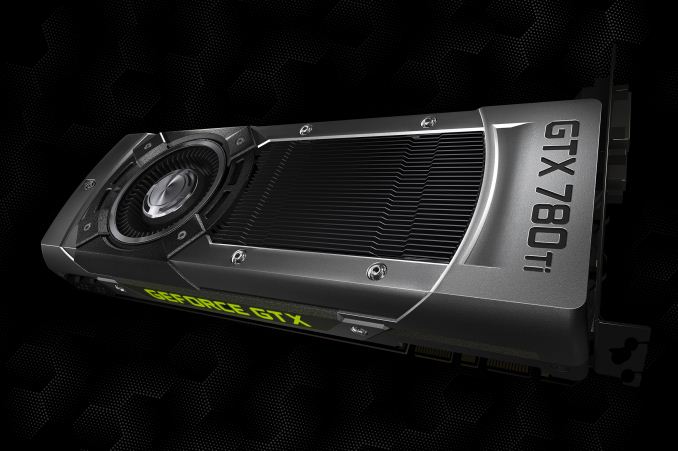

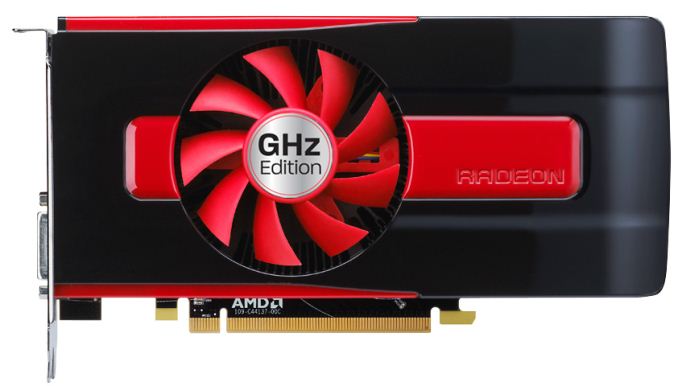
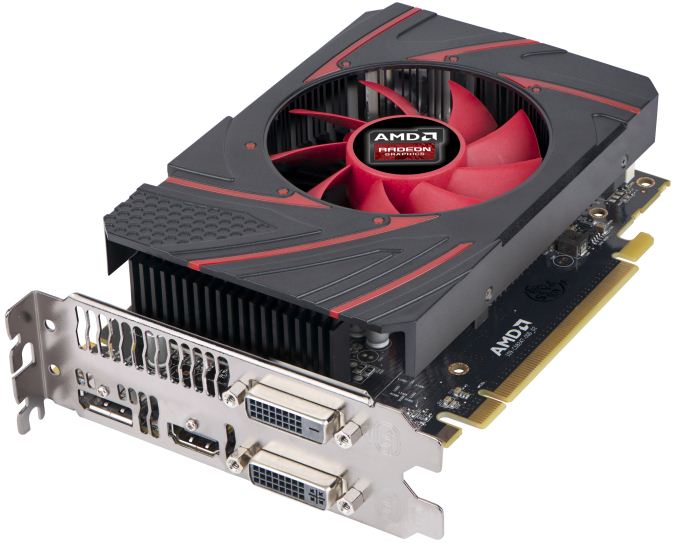
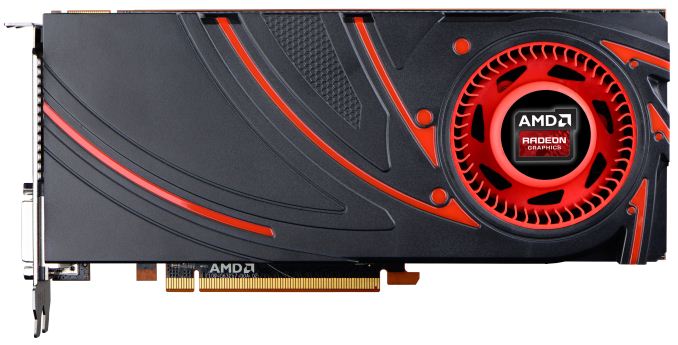
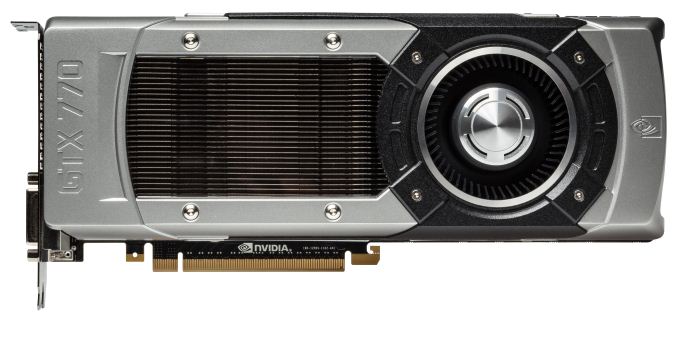
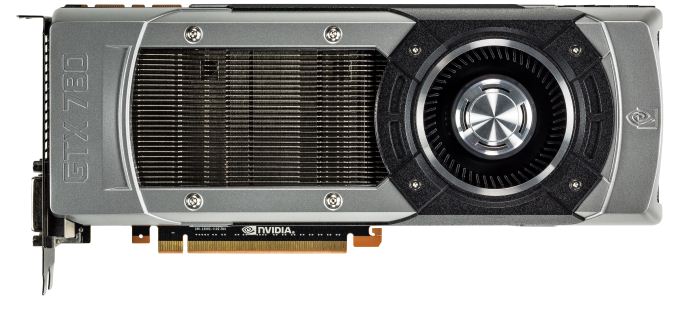
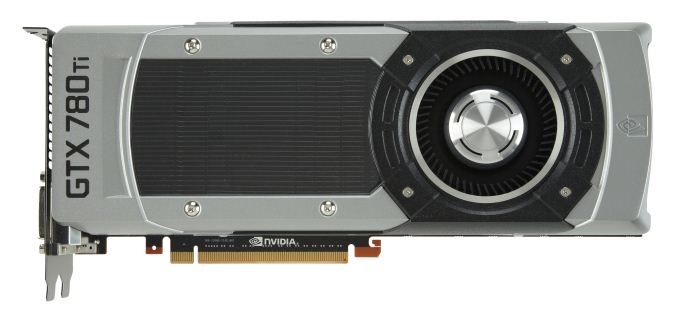
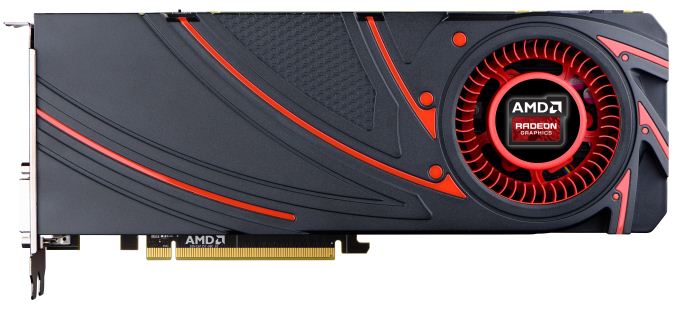
_575px.jpg)
_575px.jpg)
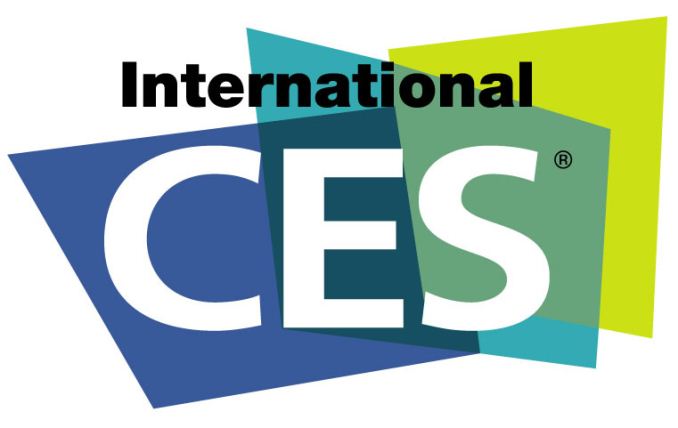
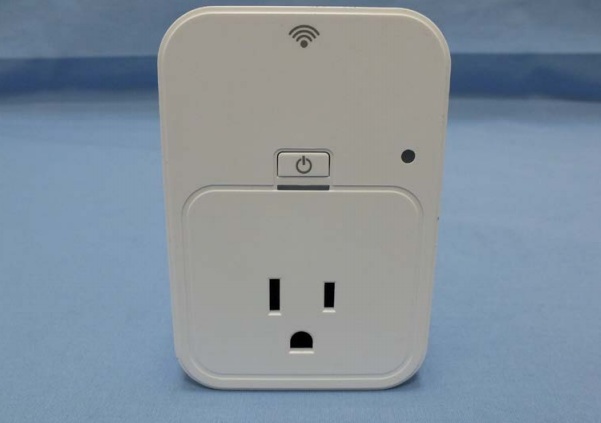
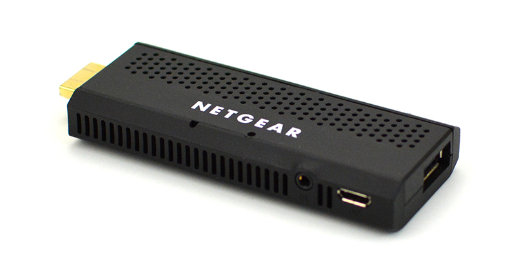






_575px.jpg)
_575px.jpg)
_575px.jpg)
















Bookmarks